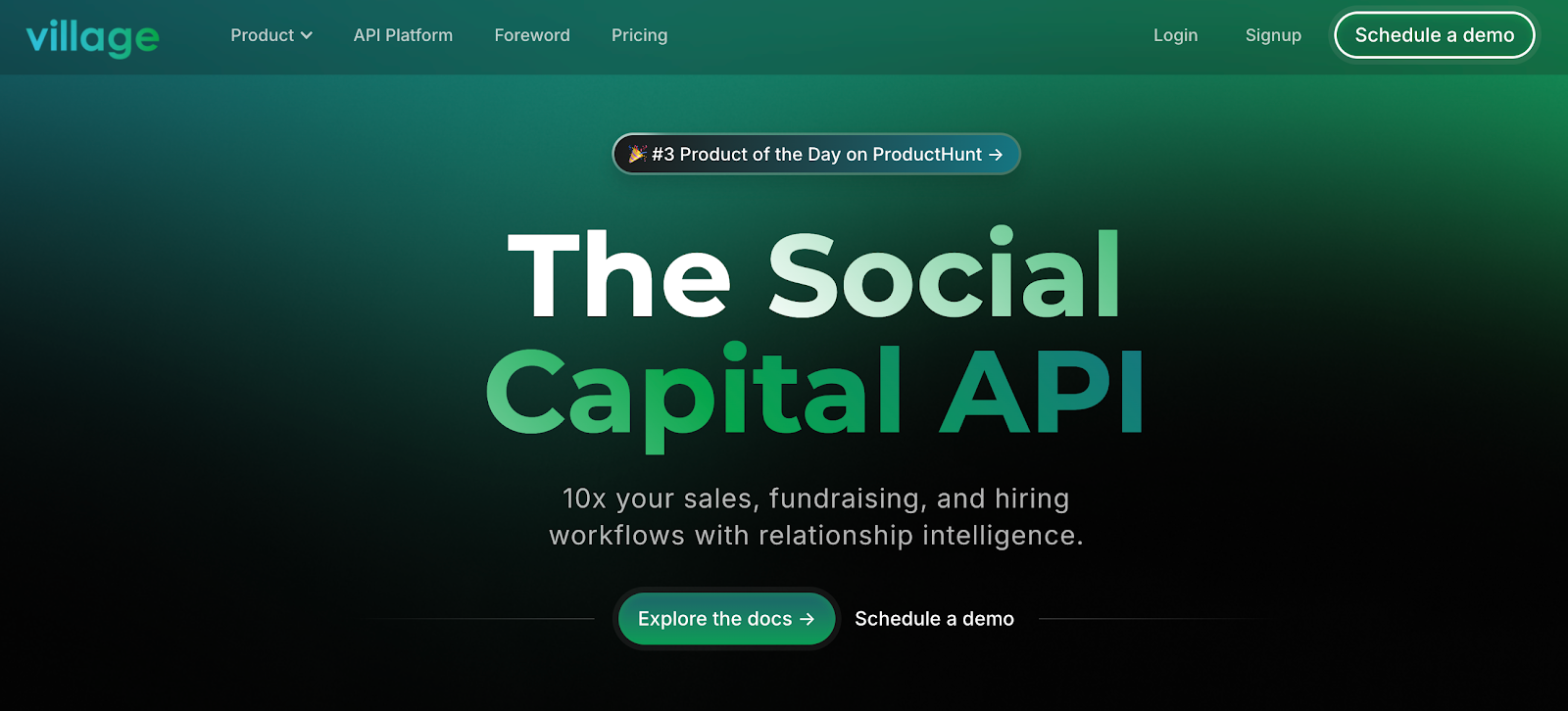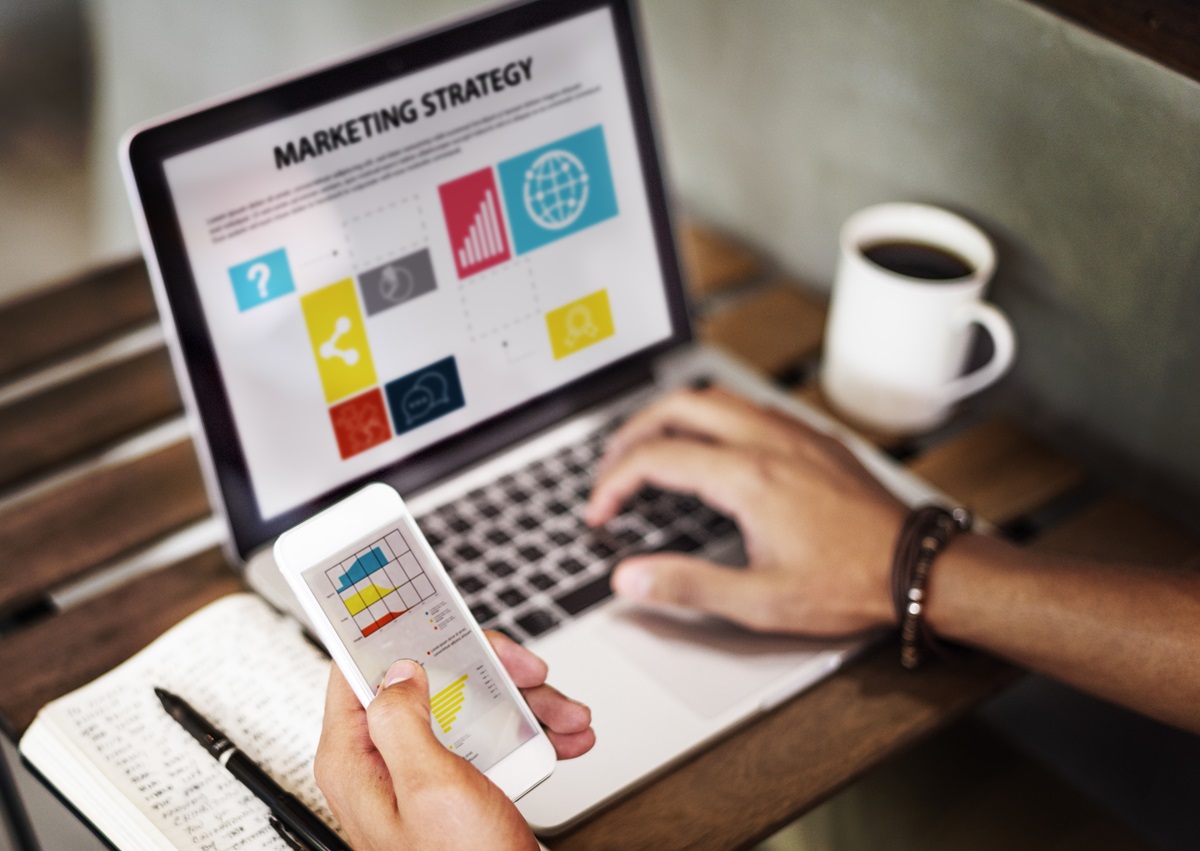Is your B2B marketing strategy actually working? If cold emails are getting ignored and ad performance is dropping, you’re not imagining it. Buyers are overloaded with generic outreach, and they’re quicker than ever to tune out messages that don’t feel relevant.
B2B marketing is changing fast. Tactics that worked a few years ago aren’t enough anymore. In 2025, companies that stand out will focus on building trust, reaching the right buyers through better channels, and bringing sales and marketing teams into tighter alignment.
AI, automation, and relationship-based strategies are becoming more common, and if you’re not adjusting, you could fall behind.
Here are 13 B2B marketing trends to help you reach the right buyers, build trust, and drive more qualified leads.
1. AI and Automation Reshape Lead Generation in B2B Marketing
Artificial intelligence (AI) is no longer experimental in B2B. It's actively helping marketers move past manual tasks and focus on higher-quality leads that convert.
According to recent reports, 98% of B2B marketers say automation is now critical to their strategy. With the marketing automation market projected to reach $13.71 billion by 2030, AI tools are no longer optional. They’re reshaping how outreach and engagement work.
Here’s what AI and automation can do:
- Prioritize high-intent leads based on real-time behavior
- Automate personalized follow-ups based on how prospects interact
- Power chatbots and AI agents that guide users through websites
- Deliver smarter insights to improve your content marketing strategy
If you're still relying on generic outreach, it's easy to get left behind. Businesses that use AI to support targeting, personalization, and engagement are already seeing better responses and faster conversions.
2. Video Marketing Is a Must-Have for B2B Content Creation
Buyers don’t always want to read long product pages or sift through brochures. They want to see your offer in action.
That’s where video comes in.
Recent data shows that 87% of B2B marketers use video in their marketing strategy. It’s not hard to see why. Buyers watch videos when researching products and services, and many prefer it over text because it's quicker to process and easier to remember.
If you haven’t already started to create content in video format, now’s the time. Simple formats like product demos, tutorials, and customer stories can help people understand what you do and why it matters.
Video also works great in ad campaigns. A short, engaging clip can grab attention faster than any static post. That first impression often leads to clicks, views, and interest you can build on.
In 2025, video is one of the fastest ways to earn attention, build trust, and move potential buyers closer to a decision.
3. Content Marketing Is Focused on Value and Education
You’ve probably come across B2B blog posts that say a lot without really saying anything. And your buyers have to.
That’s why content that teaches, informs, or solves a problem is what sticks.
Focus on Clarity Over Quantity
Buyers are overwhelmed with content. If yours doesn’t offer something useful, they’ll bounce. 70% of B2B buyers expect content that speaks directly to their needs. That means your content should answer relevant questions.
You don’t need to publish every day. What you need is content with purpose. A well-researched guide or whitepaper often does more than a dozen generic blog posts. Back it up with research reports and original insights, and your audience will pay attention.
Meet Buyers Where They Already Are
Your search engine optimization (SEO) efforts still matter, but the goal isn’t just to rank; it’s to be helpful. Search engines reward content that delivers real answers, so create resources your audience will actually want to read.
Post where your buyers hang out. Whether it’s LinkedIn, newsletters, or an online community, meet them where they already spend time.
If your content feels helpful, relevant, and thoughtful, people will stick around, and, more importantly, they’ll keep coming back.
4. Relationship-Based Marketing Replaces Cold Outreach
You’ve probably noticed that cold emails don’t land like they used to.
Even a well-written message often goes unread when there’s no existing connection. Buyers want relevance. They want introductions that come with context and trust. If someone they know or respect vouches for you, they’re far more likely to respond.
So what should you do instead? Lean into relationships.
Relationship-based marketing helps you focus on warm outreach instead of casting a wide net. Instead of throwing more money at advertising platforms or flooding inboxes through pay-per-click (PPC) campaigns, this approach gets you closer to buyers through mutual connections.
And that’s where Village comes in.
How Can Village Help with B2B Marketing?
Village gives marketers the tools to connect with prospects through warm paths.
- Warm intro discovery maps relationship paths to any company or contact using real-time network data across 700 million profiles.
- Advanced filters let you build focused lists based on title, company size, industry, and even buying intent.
- Intro management tools help you manage scaled outreach with personalized templates and trackable referral links.
These features help solve today’s toughest marketing challenges. You’re no longer trying to break through the noise. You’re starting conversations in a way that feels personal and earns trust from the first message.
5. B2B Podcasts Attract More Listeners
You’ve probably noticed more B2B companies launching podcasts lately. That’s because people are tired of flashy ads and want real, relatable stories from people they trust.
But is podcasting just another content trend?
Not quite. Podcast listenership is expected to reach 504.9 million by the end of 2025. A growing number of professionals now tune into podcasts as part of their regular workday.
So, what does that mean for you?
You don’t need a fancy studio to get started. You can repurpose webinars, host interviews with your team, or invite clients to talk about their experiences. What matters is delivering content that’s worth someone’s time.

Once you record an episode, share it on your website, email list, and social media. Don’t rely on one distribution channel. Reach your audience where they already spend time, whether that’s Spotify, LinkedIn, or your newsletter.
Keep in mind that podcasts aren’t about going viral. They’re about building a relationship with your audience over time. Mention listener questions, shout out comments, and create space for people to respond. That back-and-forth keeps people coming back.
6. Personalization and Account-Based Marketing (ABM) Improves B2B Strategies
Generic emails get ignored. You’ve likely skipped over messages that felt irrelevant or out of touch, and your prospects do the same.
So, how do you get noticed?
Make your outreach more specific.
Personalization doesn’t mean rewriting every email from scratch. You can still scale, but it starts with paying attention.
Use behavioral data to understand what your audience clicks on, reads, or watches. Then, send follow-ups based on what they’ve shown interest in, not just what you want to sell.
ABM takes it further by focusing your effort on a few companies that truly matter to your pipeline. Instead of casting a wide net, you build smaller, more intentional campaigns aimed at buyers with higher potential.
Try this:
- Look at which companies visit your pricing page or product demos
- Spot repeat activity from the same account and prioritize those leads
- Align your sales and marketing teams around a shared list of top targets
According to Research and Markets, ABM is expected to reach $1.03 billion by the end of 2025. More companies are choosing focus over volume, and it’s paying off.
7. SEO Evolves With AI and Voice Search
Search behavior has changed. B2B buyers no longer type isolated keywords, but ask full questions, use voice assistants, and expect results that provide real answers in plain language.
Google’s recent algorithm updates, like BERT and RankBrain, prioritize context and intent over keyword matching. If your SEO approach still relies on keyword stuffing or outdated tactics, you won’t get the visibility you need.
Many B2B companies haven’t caught up. Their websites still focus on writing for algorithms instead of real people. That disconnect creates gaps that more agile marketers are now filling.
It also affects how paid channels perform. When organic visibility drops, businesses often increase spending on Google ads. But if your site isn't optimized to match buyer intent, even paid clicks won’t lead to conversions. That’s why lead generation strategies start with content that answers real questions clearly.
To adjust, focus on helpful content written in a natural tone. Refresh old pages to align with current search patterns. Structure your site for clarity, not just traffic.
If your SEO sounds human and solves problems, you’ll build trust among potential customers.
8. Email Marketing Becomes Smarter With AI and Automation
Email still works in B2B, but only when used with intention.
More marketers are realizing that automation alone doesn’t cut it. You can’t just rely on scheduled blasts and hope your message lands. Buyers expect relevant content that matches their needs and timing.
That’s where the shift is happening.
New marketing technology now leverages machine learning to refine when and how messages are sent. If someone clicks on a link but doesn’t convert, your system can send a follow-up that feels less like a nudge and more like a thoughtful response. It tracks behavior and suggests what to say next based on user activity.
It connects back to your broader marketing campaigns. Instead of being siloed, email becomes a tool that nurtures leads and brings people further into your content ecosystem.
9. More Buyers Expect Self-Service and Digital Buying Options
In recent years, more B2B buyers have started relying on their research before engaging with a company. They prefer to move through the buying process without friction, and they’re no longer waiting around for sales reps to guide them.
This trend isn’t surprising. B2B buyers want to evaluate pricing, explore use cases, and view demos without scheduling a call.
A recent study found that 73% of B2B buyers prefer self-service options during the purchasing process.
This shift is also changing how companies approach their marketing budgets. More money is being allocated to digital experiences that support self-service and transparency.
Teams are investing in better websites, on-demand demos, and resources that walk prospects through the purchase process at their own pace.
If your content or site makes people jump through hoops just to find answers, you’re likely losing them. Buyers want clarity, access, and control. The companies that deliver that experience are the ones seeing better conversions.
10. Social Media Marketing Shifts to Engage B2B Buyers
Social media platforms aren't just where people go to unwind. They're where B2B buyers go to learn, compare, and connect.
More customers are actively using social media channels like LinkedIn and YouTube to follow industry updates, read commentary, and evaluate which companies feel credible.
B2B companies that are getting real traction are treating social media like a two-way conversation. They’re using it to share ideas, show personality, and start discussions.
Here’s what that looks like:
- Posting insights from your team instead of brand-only updates
- Using behind-the-scenes content to bring people closer to your culture
- Highlighting real customer stories and lessons learned
- Supporting influencer marketing by partnering with credible voices in your niche
If your business still sees social media as just a place to repost links, you’re missing real opportunities. The buyers you want to reach are already active and paying attention.
When you meet them with content that’s relatable, specific, and useful, you don’t have to chase engagement. It happens naturally.
11. First-Party Data Becomes the Backbone of B2B Marketing
More B2B teams are turning to first-party data to strengthen audience relationships and improve message accuracy.
This shift didn’t happen overnight. As third-party cookies lose their effectiveness and privacy rules become stricter, marketers have started looking inward.
First-party data has become a foundation for content marketing success because it comes directly from your audience, not an outside source.
By tracking how existing customers interact with your brand, you can shape messages that speak to their interests. This leads to better responses, stronger relationships, and more useful conversations.
When buyers receive content based on their behavior instead of assumptions, they’re more likely to engage.
Paired with industry insights, first-party data can help you deliver valuable information at the right time. No more guessing what buyers need; you can now provide answers that are timely and relevant.
12. Visual and Interactive Content Keeps Buyers Engaged
Buyers are no longer drawn to dense whitepapers or static slideshows. What they want is content that feels approachable, relevant, and worth their time. That’s why B2B teams that create content with a focus on interaction and clarity are seeing better results.
Interactive formats, like assessments or quizzes, hold attention longer than traditional content. These tools also help marketers better understand what their target audience cares about while offering something useful in return.
Strong visual content makes information easier to absorb and easier to remember. Data visualizations, short-form videos, and clean layouts allow your message to stand out without overwhelming the reader.
Brands that connect most are the ones that use content to reflect their brand's values and meet buyers where they are.
If your current strategy still leans heavily on static formats, rework your approach across marketing channels. Buyers are engaging differently, and your content should keep up.

13. Hybrid Events Make B2B Networking More Accessible
You’ve probably seen this shift already: more B2B events are blending online and offline formats.
Why?
Because your audience isn’t all in one place.
Some people are ready to meet face-to-face, while others prefer to join from their laptops. Hybrid events give you a way to meet both groups where they are. Whether you're hosting a demo, panel discussion, or Q&A, you can invite potential customers from anywhere without leaving others out.
This also helps you expand your reach across your target market. You’re no longer limited to a single location or time zone. And when attendees feel like they can choose how they show up, they’re more likely to engage.
If you're used to running only in-person events or only virtual ones, this is the time to try both. You’ll build stronger connections and make space for more meaningful conversations.
Grow Your B2B Network With Village

Cold emails and generic ads aren’t cutting it anymore. Buyers are harder to reach, and trust matters more than ever. Village helps you move past impersonal outreach by tapping into warm introductions through your real network.
With Village, you can find the best path to any lead using AI-powered relationship mapping across over 700 million profiles and 30 million companies. Instead of starting from scratch, you can see who on your team already knows someone at your target account and how strong that connection is.
You also get access to features that simplify your campaigns:
- Map warm paths and view connection scores to prioritize outreach
- Use AI-enriched templates and contact boards to launch scalable, intro-driven campaigns
- Sync team contacts, calendars, and LinkedIn data to uncover shared network access points
Village connects directly with your customer relationship management tools, so you can plug relationship intelligence into your existing marketing and sales workflows.
If you're ready to stop guessing and start connecting with people who already trust your network, Village gives you the visibility and tools to make it happen.
Turn your network into your best growth channel. Book a demo with Village today!
FAQs About B2B Marketing Trends
What usually prompts a B2B purchase?
B2B buying typically starts when a company runs into a challenge that disrupts its current workflow or holds back progress. It might be a need to save time, reach new customers, improve a process, or adjust to shifts in the market.
Internal pressure, budget changes, or recommendations from trusted contacts can also push buyers to explore new options.
What is an example of B2B marketing?
A software company selling business tools might run LinkedIn ads, publish helpful blog posts, and send personalized emails to IT professionals looking for solutions. Instead of blasting the same message to everyone, they focus on businesses that match their ideal customers.
How do you build a B2B marketing campaign?
Begin by knowing who you’re trying to reach and what matters to them. Once you have that, craft a message that speaks to their current priorities or challenges.
Then, pick the channels where your audience spends time. This could include paid ads, organic search, email, or LinkedIn.
Run the campaign, keep an eye on how it performs, and make updates as you go based on what gets results.









